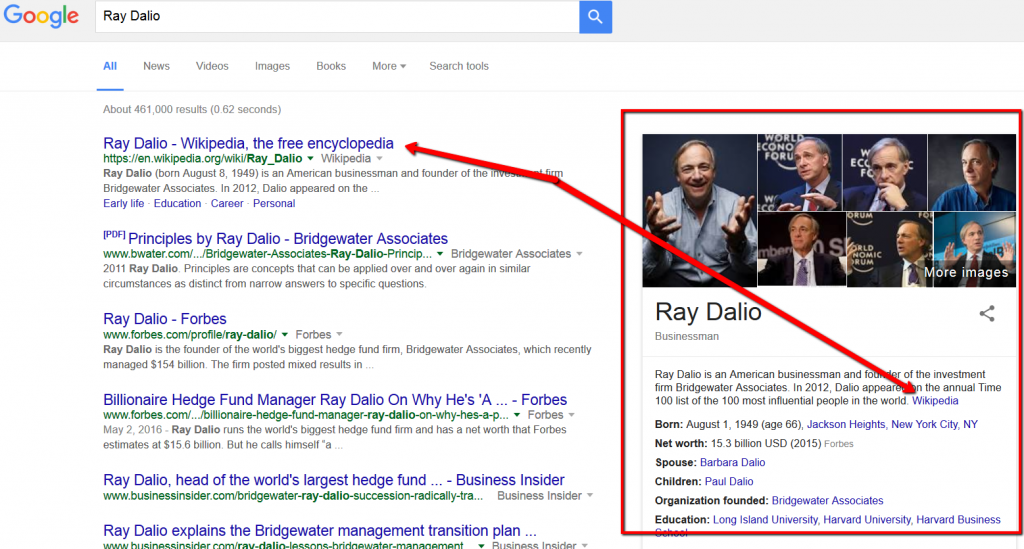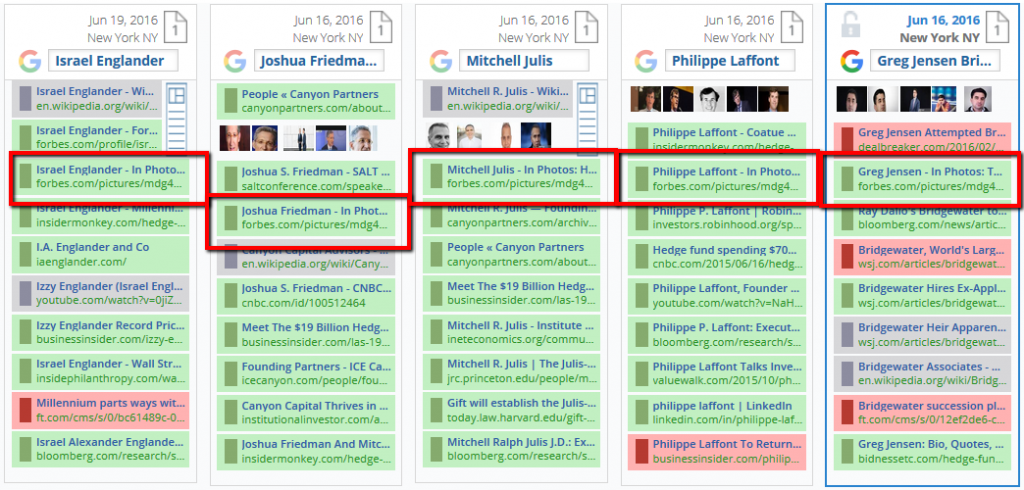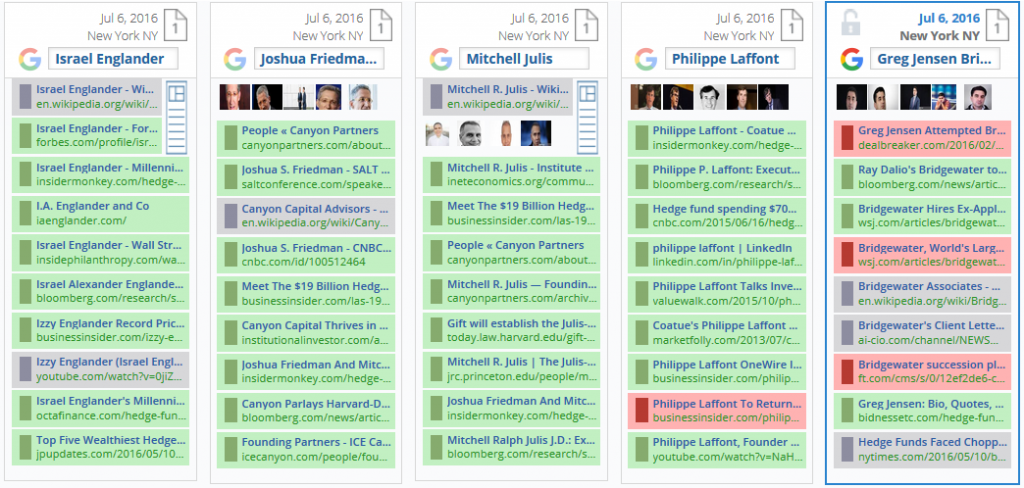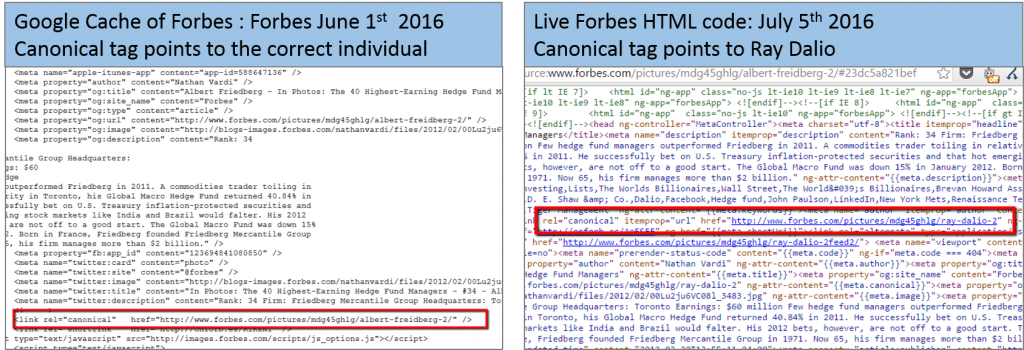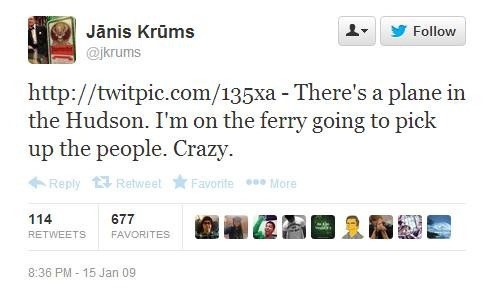How One Small Technical Error by Forbes Changed the Reputation of Fortune 500 CEOs… Overnight
New trends in Google search results are typically attributed to changes in Google’s algorithm. Search engines make frequent changes that affect search results; many of which are not known to most users. For example, over the past several months Google reintroduced the ‘Twitter box’ causing Twitter to feature prominently in search results for many brands and individuals. Wikipedia has continued to maintain top positions in search, and is the primary source of information for Google’s Knowledge Panel. Google has experimented with the inclusion of an in-depth articles section, both removing and then reintroducing it. But sometimes, significant changes in Google search results aren’t algorithmic; rather they are the result of outside forces.
At Five Blocks, we track the reputation of thousands of brands and executives and our system alerts us to major changes impacting a large segment of Fortune 500 CEOs. Forbes pages featuring a gallery of relevant images, suddenly disappeared for many of the executives, practically overnight.
All the Forbes image pages seemed to have disappeared.
On June 16th and 19th 2016
On July 5th 2016
All the Forbes image pages seemed to have disappeared.
Initially, we assumed this was an algorithmic change in Google, but when we followed the tracks, it was clear that a human error by a Forbes staff member had resulted in a ripple effect, affecting the search results of many individuals.
What Happened?
Pages on Forbes.com, like many other sites, include code known as a canonical tag. The purpose of this tag is to send a signal to Google that the page you are on is the original content. Oftentimes the same content exists on multiple pages. Thus it is useful to direct Google to the original version.
On or just before June 25th, the URL that the tag began pointing to was the first individual on the list.
In one instance all the individuals on this list had a canonical tag pointing to Ray Dalio:
In another instance, the canonical tag began pointing to Larry Page (of all people!):
Luckily the mistake looks easy to correct and is not likely to have a long-term impact. This example serves as a reminder of the pivotal role that specific prominent publications play in the digital reputations of many executives.
Many factors impact digital reputation. Google’s algorithm certainly plays a central role, but so does launching and maintaining owned sites and content, interacting in social media, and engaging with the press to get the coverage your brand needs. At the same time, it is worth remembering that like many things in our lives, digital reputation is vulnerable to both human and technological error. Tracking your online reputation on an ongoing basis can help you take quick action when a concerning situation does arise.
And who knows, sometimes, writing a blog post and tweeting it out could be what fixes the problem.
Forbes could not be reached at the time of this publication for comment.
Twitter Firehose is Open to Google… Again!
Executive Summary:
- On February 5th 2015 Google and Twitter announced a renewed partnership enabling Google to utilize Twitter data.
- This is one of the biggest indicators that Google is serious about Real-Time search.
- More volatility is expected within search results as it begins reflecting the real world more correctly.
- Companies will be forced to interact through real-time social media such as Twitter.
- For companies whose search was fairly stable, this presents new risks.
- For companies willing to engage, this presents new opportunities.
- Companies need to claim ownership and begin minimum activity on Twitter to establish a presence.
Why is it Called “The Firehose”?
The recent partnership between Twitter and Google provides API access – what is commonly referred to as “access to the Twitter Firehose” – to Google. This is an attempt to bring more real-time data into the search giant, providing a seamless and timelier experience for the user.
When Google crawls a site, it “visits” each and every page, ordinarily requiring minimal effort. However, when this happens too often, the site’s servers become over-burdened. For example, if Google were to crawl Twitter’s 6,000 tweets a second and nearly 500 million tweets a day, Twitter would crash.
At this point, studies show that only 7% of all tweets get indexed within Google. The Firehose is a real-time feed designed to allow Google to absorb the vast quantity of data using an API.
History of the Relationship
This is not the first time we have seen this relationship between Google and Twitter.
- In October 2009, Google signed a deal with Twitter to utilize the data from the “firehose.”
- Two months later, Google revealed its “Real Time Search,” with another information box consolidating tweets into the organic results.
- After less than two years, in July 2011, Google and Twitter were unable to renew the terms of the deal. They parted ways and Google stopped showing real-time search as a result. At one point, among friction, Twitter entirely blocked Google’s bots from crawling the site, later explaining it was a mistake and unintentional.
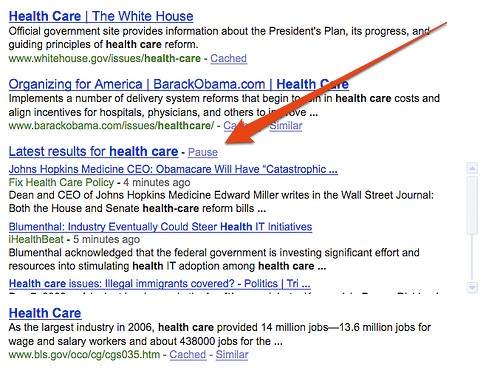
The Real-Time Web is Growing as the Firehose Opens
In a world of fast moving technology, real-time data has become more important than ever, escalating the expectation of the average user.
- Google does an incredible job at indexing global data, but there is often a delay in how quickly it can unearth the latest news.
- Twitter on the other hand – better than any other platform – often breaks stories and is the source of real-time news consumption. Aside from that, Twitter could generally go unnoticed once mainstream media catches up.
What has become clear is that both platforms alone do not tell the full story online. With this alliance, users will get real time updates into the most comprehensive source of information substantially increasing retrieval time.
Five Blocks’ Predictions
While it is still unclear how the relationship will ultimately materialize, there is some speculation based on some of the previous history:
Prediction 1
Google will NOT create a custom section in the results page for Tweets as they did last time. That being said, this doesn’t make it any less important, and could add a new layer of complexity and turbulence to search results.
Prediction 2
Hashtag result pages will become very influential. In November 2014, Twitter began building out more “SEO friendly” pages for their hashtags. Google will find a way to leverage this rich, timely, and trending content.
Prediction 3
Google will begin incorporating social metrics into search results, similar to the way Schema markup will work. Bing has recently rolled this out which indicates authority.
Preparing for all Eventualities
For brands willing to engage on social media, there is a tremendous opportunity to gain additional control during a real-time crisis situation.
While there are no certainties on the exact execution of this relationship, the need to be prepared is indisputable. When Google “flips the switch,” it will likely cause many immediate changes to search results, especially if timely information is being shared.
In order to be prepared, we recommend:
- Claim your Twitter handle – If you already own your brand’s name, great! If not, this could mean taking over an account that is currently owned by someone else.
- Optimize Images and Descriptions – Add your logo, include a nice description, background image and appropriate link back to the company website.
- Verify the account – In this process, brands and prominent individuals register with Twitter, authenticating their Twitter account ownership.
- Start Tweeting – Begin investing small amounts of time in Twitter and – at a minimum – automating tweets which include company news, press releases, statements, or other positive relatable content.
- Create an emergency response plan for when news begins to trend.
Conclusion
Time will tell how this relationship will evolve, but the most important thing is to have all assets in place. This is likely the beginning of Google integrating real-time content into search results and we can expect to see more social impact, markup, and social media as ranking signals and measure of influence.
For more information on Twitter and Google partnership, visit the resources below:
- Launch Announcement:
http://www.bloomberg.com/news/articles/2015-02-05/twitter-said-to-reach-deal-for-tweets-in-google-search-results - FAQ with Danny Sullivan:
http://marketingland.com/twitter-google-search-deal-faq-117463 - Google Index Study:
https://blogs.perficient.com/2015/02/10/how-does-google-index-tweets-today-how-the-new-twitter-deal-will-impact-seo/
For more information about Five Blocks, visit us at https://www.fiveblocks.com or contact Aaron Friedman at aaronf@fiveblocks.com or 847-877-85174 with any inquiries how we can help.
Facebook’s Flawed News Feed Bumping & The Rebirth Of Bad Content
What Facebook is trying to achieve is actually not a bad thing. I miss content all the time. It happens. So if that piece is popular among my friends, then, truth be told, I do probably want to see it. That being said, story bumping in its current form is majorly flawed. Why?
